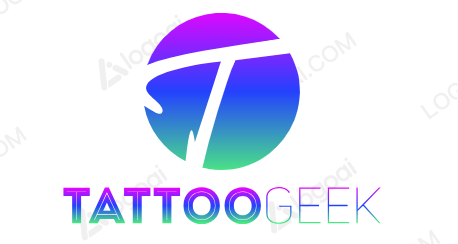Have you ever gotten a tattoo and later regretted it? Maybe the design doesn’t suit you anymore, or perhaps you just want a fresh start. Whatever the reason, **laser tattoo removal** can help you erase those unwanted ink marks. It’s a popular procedure, and for good reason. It’s non-invasive, and in many cases, it can effectively remove tattoos without leaving any scars.
In this article, I’m going to share some strategies on how laser tattoo removal works. We’ll explore the science behind the process, the different types of lasers used, and the factors that influence the effectiveness of treatment. I think you’ll find this information helpful, whether you’re considering getting a tattoo removed or simply curious about the process.
I’ve been writing about health and wellness for over a decade, and I’ve learned a lot about the different treatments available. In my opinion, laser tattoo removal is one of the most effective and safe ways to get rid of unwanted tattoos. It’s important to find a qualified and experienced technician, but with the right care, you can achieve amazing results.
How Laser Tattoo Removal Works
Tattoos, once a symbol of rebellion and self-expression, can sometimes become a burden. Whether it’s a youthful indiscretion, a faded design, or simply a change in taste, the desire to remove unwanted ink is a common one. Thankfully, laser tattoo removal has revolutionized the industry, offering a safe and effective way to erase those permanent markings. But how does this seemingly magical process work?
The Science Behind the Beam
Laser tattoo removal relies on a fundamental principle of physics: selective photothermolysis. This fancy term essentially means that the laser targets specific pigments in the tattoo ink, breaking them down into smaller particles that can be absorbed by the body’s immune system. Each laser emits a specific wavelength of light, carefully chosen to target the color of the ink. For instance, a ruby laser is effective for red and orange pigments, while a Q-switched Nd:YAG laser excels at black and blue inks.
The Breakdown Process
When the laser beam hits the targeted ink, the pigment molecules absorb the energy, causing them to heat up rapidly. This rapid heating shatters the ink particles into smaller fragments. The body’s immune system then recognizes these fragments as foreign substances and begins to break them down and eliminate them through the lymphatic system. This process can take several weeks or even months, as the body gradually eliminates the ink fragments.
The Treatment Experience
Laser tattoo removal is typically performed in a series of sessions, spaced several weeks apart. The number of sessions required depends on factors such as the size, color, and depth of the tattoo, as well as the individual’s skin type. Each session involves applying a topical anesthetic to numb the area, followed by the laser treatment itself. The sensation during the treatment is often described as a series of quick, sharp pinpricks or a rubber band snapping against the skin. Some redness and swelling may occur after the treatment, but these side effects usually subside within a few days.
The Results
Laser tattoo removal is not a one-and-done solution. It requires patience and commitment. After each session, the tattoo will appear lighter, and with subsequent treatments, the ink will gradually fade until it is completely gone or barely noticeable. However, some tattoo inks, particularly those containing certain pigments like white or yellow, may be more resistant to laser treatment. While laser tattoo removal is generally considered safe and effective, it’s crucial to consult with a qualified and experienced professional to ensure optimal results and minimize potential risks.
The Future of Tattoo Removal
The field of laser tattoo removal is constantly evolving, with new technologies and techniques emerging to improve efficacy and minimize discomfort. Researchers are exploring alternative laser wavelengths and pulse durations to target specific ink colors more effectively. Additionally, advancements in topical anesthetics and cooling devices are making the treatment more comfortable. The future of tattoo removal promises even more precise, efficient, and painless solutions for those seeking to erase their past, one laser pulse at a time.
FAQs about how laser tattoo removal works
Laser tattoo removal is a popular procedure for removing unwanted tattoos. It works by breaking down the tattoo ink into tiny particles that can be absorbed by the body. Here are some frequently asked questions about how laser tattoo removal works.
How does laser tattoo removal work?
Laser tattoo removal works by using a concentrated beam of light to target and break down the ink particles in the tattoo. The laser light is absorbed by the ink, which causes the ink to heat up and fragment. These fragmented particles are then removed by the body’s natural immune system.
What types of lasers are used for tattoo removal?
There are several different types of lasers that can be used for tattoo removal, but the most common type is the Q-switched Nd:YAG laser. This type of laser emits a high-intensity beam of light that is absorbed by the ink particles. Other lasers that are sometimes used include the ruby laser and the alexandrite laser.
How many treatments are needed for laser tattoo removal?
The number of treatments needed for laser tattoo removal varies depending on the size, color, and depth of the tattoo, as well as the individual’s skin type and healing ability. Most people need between 5 and 10 treatments, spaced a few weeks apart.
Is laser tattoo removal painful?
Laser tattoo removal can be painful, but the pain is usually described as a stinging or burning sensation. Most people find that the pain is tolerable, and a topical anesthetic cream can be applied to numb the area before the treatment.
What are the side effects of laser tattoo removal?
The most common side effects of laser tattoo removal are redness, swelling, and blistering. These side effects are usually temporary and will resolve within a few days. In some cases, there may be scarring or changes in skin pigmentation.
